More Stars
Hello, friends of the dark. The night before last, the conditions were finally good for photographing the starry sky at night. No clouds and no moon. I actually wanted to finally test the DIY Star Tracker. Unfortunately, the tracker turned in the wrong direction. I didn't even notice this during the first test at home during the day. There's always something wrong. Obviously, the connections on the stepper motor are "wrong". The part comes from my old 3D printer. Unfortunately, I don't have a data sheet for the stepper motor. The direction can easily be reversed by making a small change to the program for the Arduino, but unfortunately not on site. I didn't have a notebook with me.
Hallo Freunde der Dunkelheit. In der vorletzten Nacht waren die Bedingungen endlich gut, um den nächtlichen Sternenhimmel zu fotografieren. Keine Wolken und kein Mond. Eigentlich wollte ich den DIY Star Tracker endlich testen. Leider drehte sich der Tracker in die falsche Richtung. Beim ersten Test zu Hause am Tage ist mir das gar nicht aufgefallen. Irgendwas ist ja immer. Offensichtlich ist Belegung der Anschlüsse am Steppermotor "falsch". Das Teil stammt aus meinem alten 3D Drucker. Ich hab also leider kein Datenblatt für den Steppermotor. Die Richtung lässt sich einfach über eine kleine Änderung am Programm für den Arduino umehren, aber leider nicht vor Ort. Ich hatte kein Notebook dabei.

📷 Nikon D750 - Laowa 12/2,8 - f5,6 - ISO 400 - 30 seconds - stacking of 29 frames + 3 dark frames
I got into the car and drove about 80 km out of the city. In the brightly lit city, taking pictures of the starry sky at night is only possible to a very limited extent. It wasn't completely dark at the bridge either. As you can see in the pictures, the light bell of the city can still be seen quite clearly even at a distance of 80 km. When I arrived at the bridge at around 22:00, it was still far from dark. It's not really the best time of year for pictures like this. But what can you do for art.
I set up the tripod, attached the Start Tracker to it and aligned it to Polaris using the built-in polar finder. At this point, I didn't yet know that the machine was heading in the wrong direction. Then I aligned the camera with the planned image section and waited for it to finally get dark. This was the case at around 11:20 p.m.
In order to have a comparison as to whether stacking with star tracking works better, I first took pictures without the star tracker. That was my great luck. Otherwise I wouldn't be able to show any pictures here.
Ich setzte mich ins Auto und fuhr ungefähr 80 km aus der Stadt heraus. In der hell erleuchteten Großstadt sind Aufnahmen des nächtlichen Sternenhimmel nur sehr eingeschränkt möglich. Auch an der Brücke war es nicht komplett dunkel. Wie in den Bilder zu sehen, ist die Lichtglocke der Großstadt auch in 80 km Entfernung noch recht deutlich zu sehen. Als ich gegen 22:00 Uhr an der Brücke ankam, war es noch lange nicht dunkel. Eigentlich ist das im Moment nicht die beste Jahreszeit für solche Bilder. Aber was tut man nicht alles für die Kunst.
Ich stellte das Stativ auf, befestigte den Start Tracker darauf und richtete diesn mit dem eingebauten Polsucher auf den Polarstern aus. Zu diesem Zeitunkt wusste ich ja noch nicht, dass die Maschine in die falsche Richtung läuft. Dann richtete ich die Kamera auf den geplanten Bildausschnitt aus und wartete, dass es endlich dunkel wird. Das war so gegen 23:20 Uhr der Fall.
Um einen Vergleich zu haben, ob das Stacking mit der Nachführung auf die Sterne besser funktioniert, habe ich zuerst Aufnahmen ohne den Star Tracker angefertigt. Das war mein großes Glück. Andernfalls könnte ich hier keine Bilder zeigen.
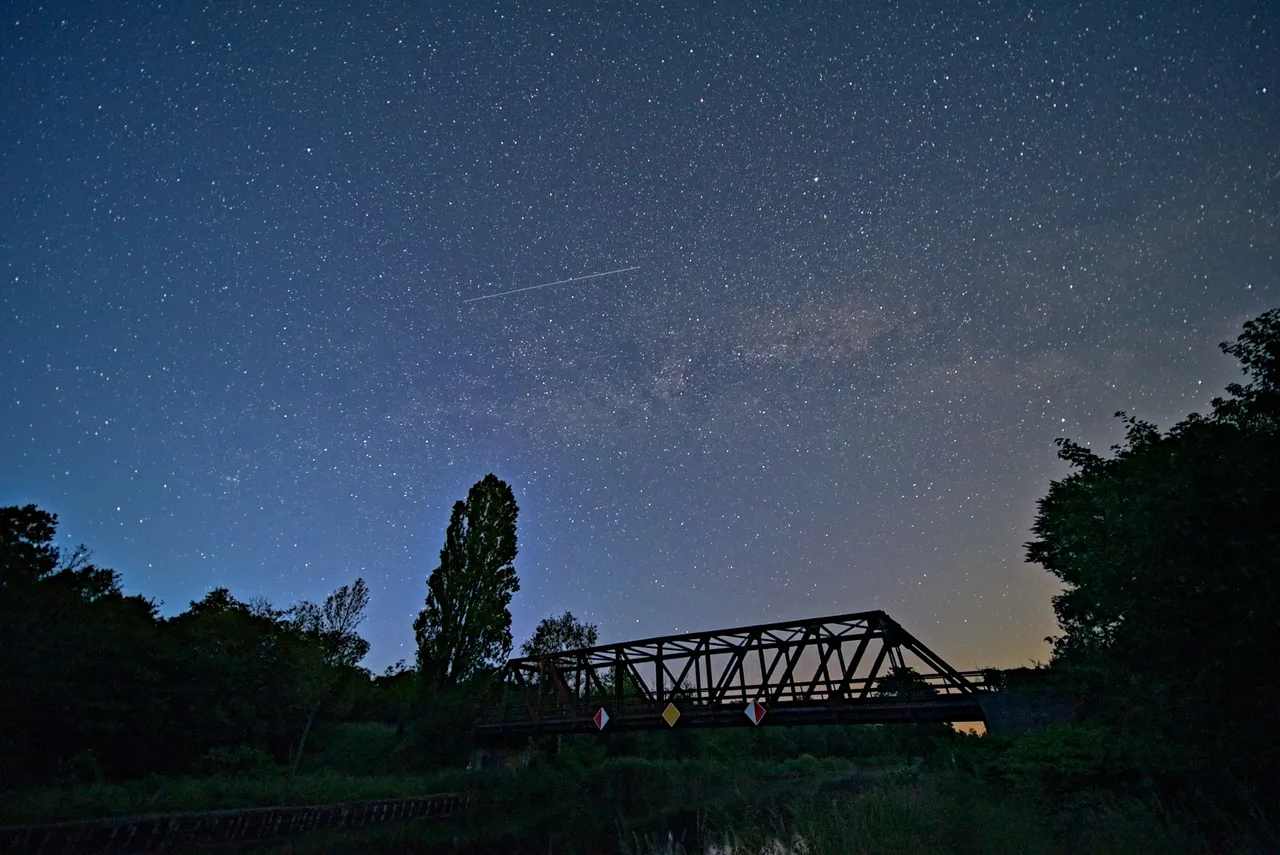
📷 Nikon D750 - Laowa 12/2,8 - f2,8 - ISO 3200 - 30 seconds
First I captured the scene in one exposure. With the 12 mm lens, it is possible to take pictures for up to about 30 seconds without the stars leaving traces in the picture. The imaging performance of the Nikon D750 is impressive, isn't it? I simply denoised and sharpened the image on the computer and corrected the exposure by +1 EV. Compared to the stacked image above, however, the stars are less clearly visible.
Zuerst nahm ich die Szene in einer Belichtung auf. Mit dem 12 mm Objektiv sind Aufnahmen bis ungefähr 30 Sekunden möglich, ohne dass die Sterne Spuren ins Bild malen. Die Abbeildungsleistung der Nikon D750 sind schon beeindruckend, oder? Das Bild habe ich am Computer lediglich entrauscht, geschärft und die Belichtung um +1 EV korrigiert. Im Vergleich zum gestackten Bild oben sind allerdings die Sterne weniger deutlich sichtbar.

📷 Nikon D750 - Laowa 12/2,8 - f5,6 - ISO 400 - 30 seconds - stacking of 29 frames + 3 dark frames
II then loaded the 29 individual shots and the three dark frames into Sequator. With very moderate settings, the result looks like this. A fairly homogeneous image. Not particularly exciting, in my opinion. I like the single shot even better.
ch lud dann die 29 Einzelaufnahmen und die drei Dark Frames in Sequator. Mit sehr moderaten Einstellungen sieht das Ergebnis dann so aus. Ein recht homgenes Bild. Nicht besonders aufregend, wie ich finde. Da gefällt mir die Einzelaufnahme noch besser.
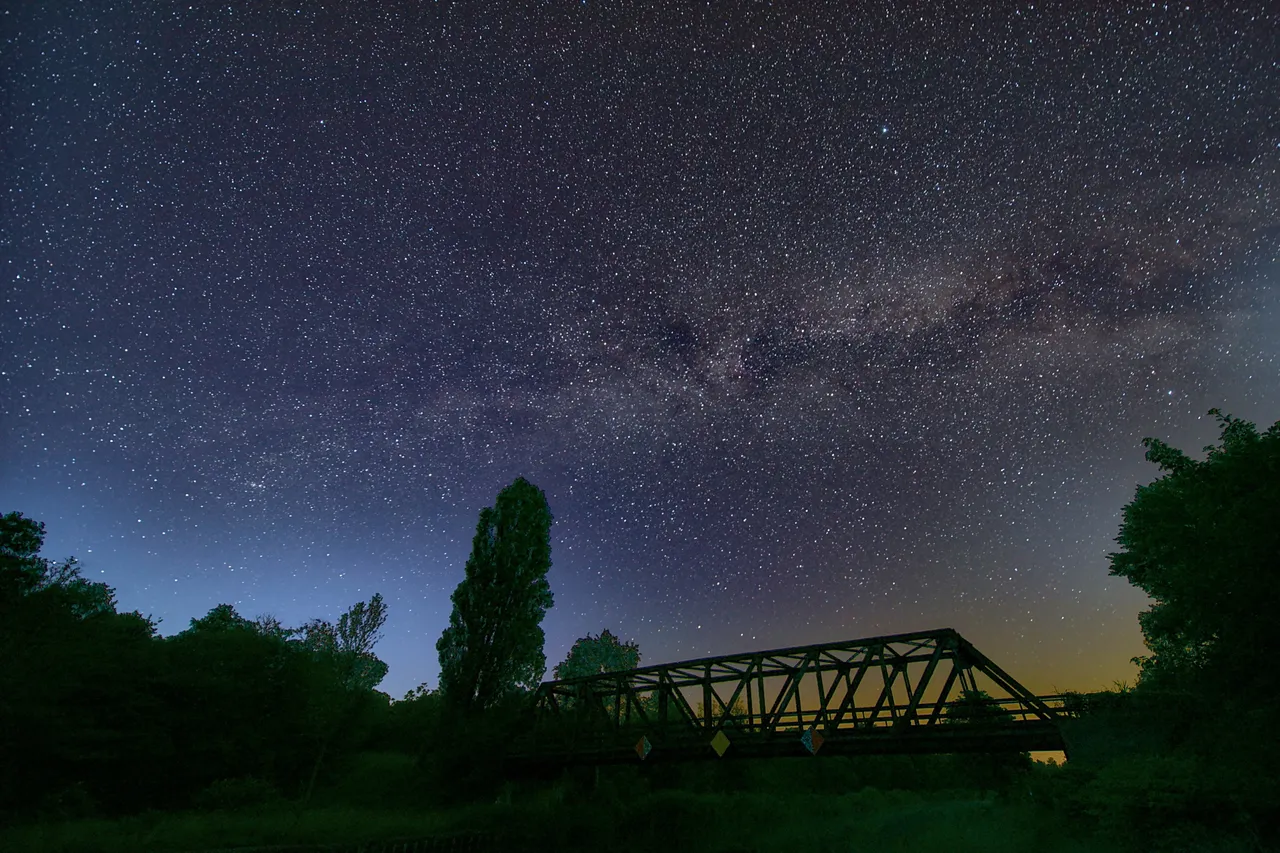
📷 Nikon D750 - Laowa 12/2,8 - f5,6 - ISO 400 - 30 seconds - stacking of 29 frames + 3 dark frames
I had chosen very "aggressive" settings for this version of the picture. Above all, the strong reduction and light pollution does not suit the picture at all. If the picture didn't have a landscape in the foreground, the starry sky would really come into its own. But these bright areas above the trees are very distracting.
I have found a good middle ground for the cover picture, even if there is certainly still potential for improvement. I could have subjected the stacked image to extensive post-processing, but here too I only denoised and sharpened the stacked images. I don't usually edit my pictures very much. I'm not that keen on it. I prefer to spend my time with the camera in nature rather than in front of the computer and then, in the best case, I already have the finished photos on the memory card. But in astrophotography, you can only get good, impressive images by stacking several images.
Für diese Variante des Bildes hatte ich sehr "agressive" Einstellungen gewählt. Vor allem die starke Reduzierung der Lichtverschmutzung bekommt dem Bild überhaupt nicht. Wenn das Bild keine Landschaft als Vordergrund hätte, würde der Sternenhimmel allerdings sehr gut zur Geltung kommen. Aber diese hellen Bereiche über den Bäumen sind schon sehr störend.
Für das Titelbild habe ich eine guten Mittleweg gefunden, auch wenn es ganz sicher noch Potential zur Verbesserung gibt. Ich hätte das gestackte Bild jetzt noch einer aufwendigen Nachbearbeitung unterziehen können, aber auch hier habe ich die gestackten Bilder nur entrauscht und geschärft. Gewöhnlich bearbeite ich meine Bilder kaum. Da habe ich nicht so viel Bock drauf. Ich verbringe meine Zeit lieber mit der Kamera in der Natur als vor dem Computer und hab dann im besten Fall die fertigen Fotos schon auf der Speicherkart. Aber in der Astrofografie kann man gute, beeindruckende Bilder eben nur durch das Stacken mehrerer Bilder bekommen.

📷 Nikon D750 - Laowa 12/2,8 - f5,6 - ISO 400 - 30 seconds - stacking of 29 frames + 3 dark frames
In addition to stacking and aligning the images, Sequator can also create star trails. It is not quite clear to me why the foreground is not stacked and thus displayed brighter. The sky and foreground are processed separately using a drawn mask. Theoretically, the foreground should therefore be able to be processed in the same way as in the images above. In theory, it would certainly be possible to calculate the traces of the airplanes out of the image as in the other images.
Sequator kann neben dem Stapeln und ausrichten der Bilder auch Star Trails erzeugen. Warum dann der Vordergrund nicht gestackt, und somit heller dargestellt wird, ist mir nicht so ganz klar. Durch eine gezeichnete Maske werden Himmel und Vordergrund getrennt bearbeitet. Theoretisch sollte der Vordergrund also genauso bearbeitet werden können, wie in den Bildern oben. In der Theorie könnte man sicher auch die Spuren der Flugzeuge aus dem Bild heraus rechnen wie in den anderen Bildern.

📷 Nikon D750 - Laowa 12/2,8 - f5,6 - ISO 400 - 30 seconds - stacking of 29 frames + 3 dark frames
To capture Star Trails, I could have simply worked with longer exposure times. As the foreground would then have been brighter in every shot, it would also have been brighter in the final image. With a longer exposure time, I could also have illuminated the scene with the flashlight. Of course, I could also edit the Star Trail images further, but this way you can see what the Sequator program can and can't do.
I'll keep you in suspense about astrophotography in the near future, weather permitting. I finally have to test the Star Tracker once I've changed the direction of rotation.Um Star Trails aufzunehmen hätte ich hier einfach mit längeren Belichtungszeiten arbeiten können. Da dann in jeder Aufnahme der Vordergrund heller gewesen wäre, wäre das auch im fertigen Bild heller. Bei einer längeren Belichtungszeit hätte ich die Szene auch mit der Taschenlampe beleuchten können. Ich könnte natürlich die Star Trail Bilder ebenfalls noch weiter bearbeiten, aber so kann man gut sehen was das Programm Sequator kann und was nicht.
Mit dem Thema Astrofotografie werde ich euch in nächster Zeit noch weiter auf die Nerven gehen, wenn das Wetter mitspielt. Ich muss schließlich den Star Tracker endlich testen wenn ich die Drehrichtung geändert habe.
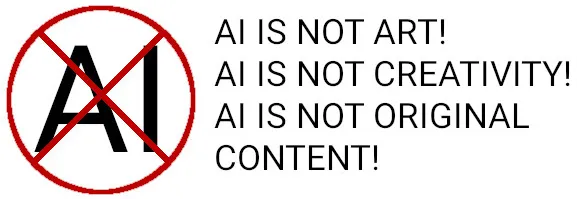

WHAT IS LIGHT PAINTING?

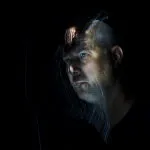
LICHTKUNSTFOTO
If you like my art visit www.lichtkunstfoto.de for more Light Art Photography and informations about Light Painting. Join me on Flickr Twitter



For more great Light Art Photography, Light Painting and inspiration check these light painters: @marlasinger666 @fadetoblack @fastchrisuk @dawnoner @oddballgraphics @martbarras @stepko @rod.evans.visual @yo-hoho @maxpateau @gunnarheilmann @neilru75 @maximepateau @ryuslightworks @lightstabeu @candelart @lacelight

WE ARE LIGHT PAINTERS
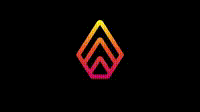
To help and support the LightPainters community here on Hive I would appreciate your delegation of HivePower. Any amount is appreciated. It does not require much to get started, we are happy for any gesture. @lightpainters
How to delegate?
Delegate 50HivePower, [50HP]
Delegate 250HivePower, [250HP]
Delegate 500HivePower, [500HP]
Delegate 1000HivePower, [1000HP]
All the Hive Power will help to upvote the artist's contribution as part of the LightPainters community.